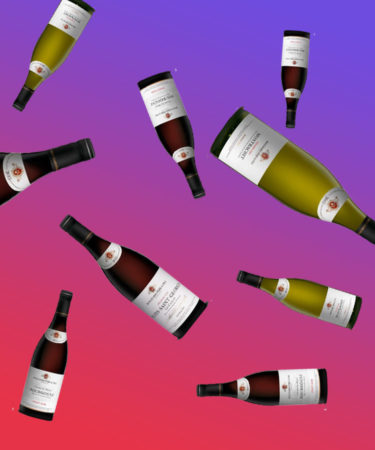Founded by textile merchant Michel Bouchard in 1731, Bouchard Père & Fils is one of Burgundy’s oldest wine-merchant houses. With 320 acres of vineyards, it’s also one of the region’s most important vineyard owners.
The company only truly became Bouchard Père & Fils in 1775, when père (father) Michel was joined in the family business by fils (son) Joseph, who had just acquired his first vineyard holdings. The company remained in the Bouchard family for nine generations until it was acquired by esteemed Champagne producer Joseph Henriot in 1995. Here are nine more things you should know about Bouchard Père & Fils.
Bouchard Père & Fils buys and grows grapes.
Bouchard Père & Fils is classed as a wine-merchant house, or negociant, because it buys a portion of the grapes used in its production. The practice is common in Burgundy where vineyards that are wholly owned by one estate (monopoles) are the exception rather than the rule. So large scale producers work with, and buy from, small-scale growers.
Bouchard Père & Fils doesn’t exclusively make wine from purchased fruit, though. The negociant is also a significant landowner within the Côte d’Or, Burgundy’s most important winemaking region.
Its vineyards are some of the most sought-after in Burgundy.
Bouchard Père & Fils owns plots across 450 different vineyards, including 183 acres in premier cru appellations and 30 acres in grand cru appellations. The brand has notable plots in four of Burgundy’s eight white grands crus, and seven of the region’s 25 red grands crus.
Bouchard Père & Fils makes wine from the “vines of baby Jesus.”
One of Bouchard Père & Fils’ most iconic wines is the Beaune Grèves Vigne de l’Enfant Jésus (or, “vine of the baby Jesus”). The wine is made with grapes from a plot of the same name in the premier cru Beaune Grèves appellation.
The plot’s name is a dedication to a Carmelite order called the Domestiques de la famille du Saint Enfant Jésus. Six months before King Louis XIV was born in 1638, the order’s founder, Marguerite du Saint Sacrement, predicted his birth, despite the fact his mother was 37 years old and had previously given birth to four stillborns. Upon the king’s birth, the order’s most important vineyard was renamed the Vigne de l’Enfant Jésus.
Bouchard Père & Fils has owned this plot for at least a century, though the exact year in which the winery became its sole proprietor is disputed. Despite the fact it is premier cru and not a grand cru wine, it is one of Bouchard Père & Fils’ most celebrated releases.
Bouchard Père & Fils is a centurion.
With its vast array of vineyard holdings, and the fact Burgundian winemaking focuses on varietal wines from specific plots, Bouchard Père & Fils makes a huge range of wines. The winery’s website currently lists over 100 releases, spanning every appellation level from regional to grand cru.
Bouchard Père & Fils is based in a historic fortress.
In 1820, Bouchard Père & Fils acquired the historic Château de Beaune. Construction of the former royal fortress was completed in the 15th century by King Louis XI, and four of the rampart’s five original towers remain intact to this day.
The fortress guards precious bottles.
The château’s network of cellars, some of which are 10 meters below ground, provide the ideal conditions for storing and aging wine. Bouchard Père & Fils currently holds thousands of bottles in these cellars, with some 2,000 dating as far back as the 19th century. The oldest is an 1846 Meursault Charmes.
Winemaking takes place in a more modern environment.
In 2005, the brand opened a state-of-the-art winemaking facility in Savigny-lès-Beaune, where it vinifies all of its 100 different wines. The vinification room is located five meters below ground level, which allows grapes to be transferred into maceration tanks or presses using gravity. Some of the wines are then matured in oak prior to bottling, in a cellar with a 4,000-barrel capacity.
Quality begins in the vineyard.
Bouchard Père & Fils and the growers it sources from have been engaging in organic practices since 2000. Its grapes are hand-harvested and collected in special crates before they’re sorted individually (once again by hand) prior to vinification.
Joseph Henriot turned around the brand’s fortunes.
When Henriot purchased Bouchard Père & Fils in 1995, the brand had fallen on hard times. A 1987 investigation into the winery found it was illegally chaptalizing and acidifying wines. This didn’t deter Henriot from shelling out a reported $50 million for the winery and its vineyards, though.
“How could I turn it down?” he told Wine Spectator in 2008. “How often does a Burgundy producer with 320 acres of land —including 30 acres of grand cru vineyards and 183 acres of premier cru vineyards — come up for sale?”
A period of heavy investment followed and quality and sales quickly improved. The U.S. is now one of Bouchard Père & Fils’ main export markets and experienced 12 percent sales growth in 2016.

